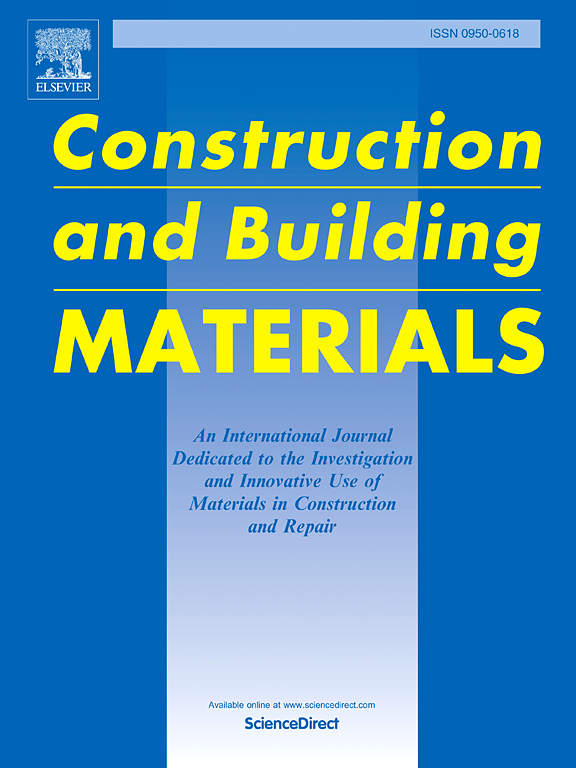A novel method and mechanism for enhancing frost resistance in cement using hydrogel
IF 7.4
1区 工程技术
Q1 CONSTRUCTION & BUILDING TECHNOLOGY
引用次数: 0
Abstract
The freeze-thaw durability of cementitious materials is a critical issue for long-term infrastructure performance. This paper proposes a novel approach that transitions from traditional passive methods of improving frost resistance to an active method. It fundamentally inhibits the freezing of pore water and reduces or eliminates frost heave forces. Hydrogels were prepared using a physical freeze-thaw method and its formation mechanism, microstructure, and mechanical properties were thoroughly analyzed. The hydrogels were then broken into particles and incorporated into cement to create enhanced cementitious materials. The frost resistance of these composites was evaluated to elucidate the mechanism by which the hydrogels improve frost resistance. Results indicated that the addition of hydrogels did not lead to the formation of new hydration products but promoted cement hydration by maintaining more unfrozen water. The amount of ice formation and the freezing rate in hydrogel cement composites were significantly lower than in pure cement paste. This effectively inhibited freeze-thaw damage and substantially improved frost resistance. Specifically, the mass loss rate of cement paste reached 7.19 % after only 125 freeze-thaw cycles, exceeding the freeze-thaw damage threshold. In contrast, hydrogel-enhanced cementitious materials demonstrated a mass loss rate of just 0.15 % after 250 freeze-thaw cycles. They also exhibited a compressive strength reduction of only about 10 %, maintaining nearly 50 MPa. Additionally, the flexural strength test for cement paste prism specimens could not be performed after 150 freeze-thaw cycles due to severe damage. In contrast, the flexural strength of hydrogel cement composites decreased by only 3.50 % at minimum. These results highlight the potential of hydrogel-modified cementitious materials for creating more resilient infrastructure that can withstand harsh freeze-thaw conditions. This advancement contributes to more sustainable construction practices.
求助全文
约1分钟内获得全文
求助全文
来源期刊

Construction and Building Materials
工程技术-材料科学:综合
CiteScore
13.80
自引率
21.60%
发文量
3632
审稿时长
82 days
期刊介绍:
Construction and Building Materials offers an international platform for sharing innovative and original research and development in the realm of construction and building materials, along with their practical applications in new projects and repair practices. The journal publishes a diverse array of pioneering research and application papers, detailing laboratory investigations and, to a limited extent, numerical analyses or reports on full-scale projects. Multi-part papers are discouraged.
Additionally, Construction and Building Materials features comprehensive case studies and insightful review articles that contribute to new insights in the field. Our focus is on papers related to construction materials, excluding those on structural engineering, geotechnics, and unbound highway layers. Covered materials and technologies encompass cement, concrete reinforcement, bricks and mortars, additives, corrosion technology, ceramics, timber, steel, polymers, glass fibers, recycled materials, bamboo, rammed earth, non-conventional building materials, bituminous materials, and applications in railway materials.
 求助内容:
求助内容: 应助结果提醒方式:
应助结果提醒方式:


